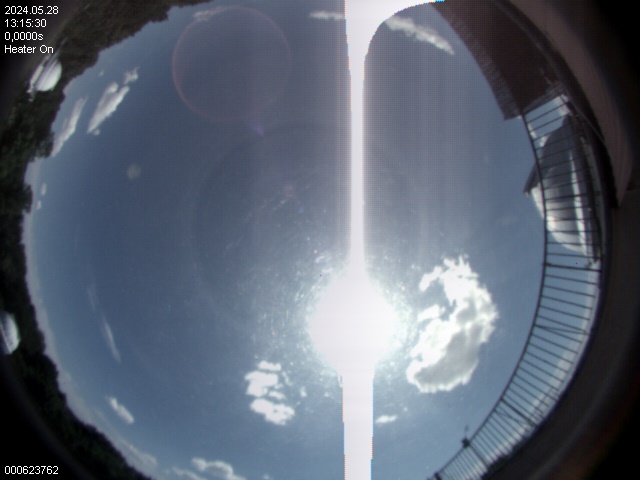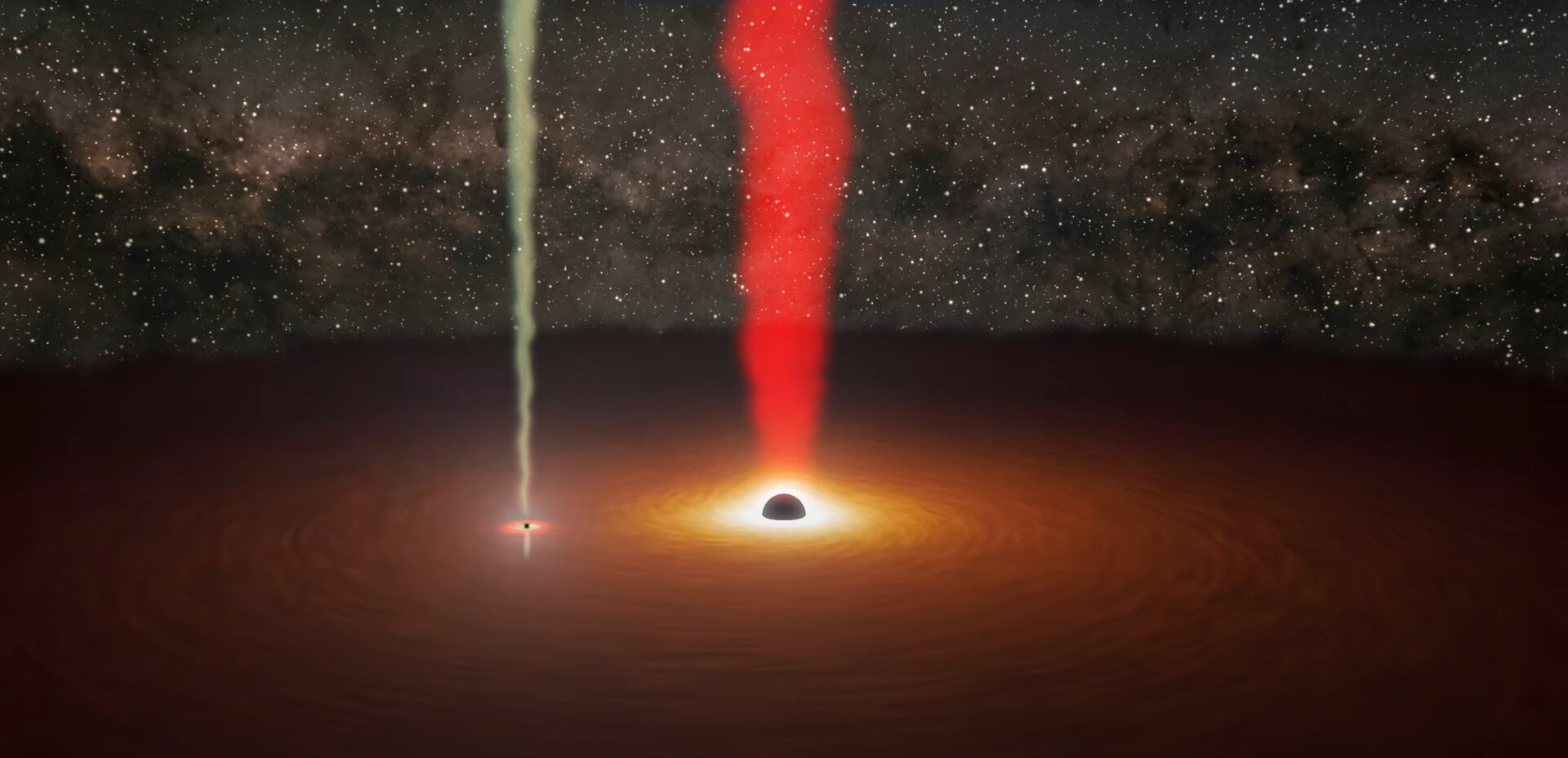Contact
APOD
Night under the Stars
Meteo

Youtube
Be inspiration. Create the future.
 Web Content Display
Web Content Display
Web Content Display
Web Content Display
 Navigation
Navigation
Navigation
Navigation
 Web Content Display
Web Content Display
Web Content Display
Web Content Display

Be inspiration. Create the future.
 Web Content Display
Web Content Display
Web Content Display
Web Content Display
Several collaborating research groups, including a team from the Jagiellonian University, have confirmed the presence of two supermassive black holes in the active nucleus of the distant galaxy OJ 287. The existence of a pair of black holes was first suggested by astronomers from the University of Turku, Finland, back in 1982.
The main black hole OJ 287, with a mass of about 18 billion Suns, is surrounded by a galactic accretion disk from which it slowly ingests matter. This supermassive black hole also generates jets, which are high-energy, highly collimated outflows of matter accompanied by electromagnetic radiation observed by telescopes on Earth. A second, smaller black hole with a mass of "only" 150 million solar masses orbits its companion and periodically pierces its disk, causing a sudden, brief flare in the brightness of the entire galaxy. The temporal variation in brightness of the entire object has been observed for 120 years, and its earliest images were still recorded on glass photographic plates.
NASA's Transiting Exoplanet Survey Satellite (TESS) orbiting telescope is involved in the daily search for exoplanets. To date, it has detected 410 of them, while the total number of known globes orbiting stars in our Galaxy other than the Sun is now more than five and a half thousand. In 2021, however, TESS spent several weeks carefully observing an object of a completely different nature: it was pointed precisely at the galaxy OJ 287 to help confirm the hypothesis that there are two black holes at its centre. To detect signs of the presence of the less massive of the two, the telescope monitored the brightness of the main black hole and its associated jet.
We do not currently have the ability to directly observe the smaller black hole orbiting the larger one, but its presence was unmasked by the galaxy's sudden increase in brightness. The brightening itself lasted only 12 hours, which shows how difficult it is to record a similar event unless the time of its arrival is known in advance. Moreover, a brightening of this particular type had not previously been observed for OJ287. It was expected, however, because Pauli Pihajoki from the University of Turku predicted it in his doctoral thesis back in 2014. According to him, the flare was supposed to occur at the end of 2021, which gave scientists from all over the world enough time to plan observations of the galaxy with multiple ground-based and space-based telescopes. The TESS satellite detected the expected flare on 12 November 2021 at 2:00 GMT. The discovery was independently confirmed by, among others, the Swift multi-band orbital observatory. Thereby, scientists have found indirect but clear evidence that the less massive black hole OJ 287 is orbiting a giant black hole about 100 times larger than itself.
An international research group led by Staszek Zoła from the Jagiellonian University's Astronomical Observatory in Kraków has detected the same event with the help of telescopes of the Skynet network located in various places around the world, thus maintaining continuity of observations regardless of the time of day or night. One of the large optical telescopes located at our Krakow Observatory also belongs to this network. The observations were additionally supported by a clear sky. In a newly published paper that combines all the observations so far, Mauri Valtonen and his team from Turku prove that the 12-hour increase in the brightness of the galaxy OJ 287 did indeed come from the smaller black hole and its close surroundings. The findings were published in The Astrophysical Journal Letters.
A rapid spike in brightness occurs when the smaller black hole absorbs a large chunk of the accretion disk surrounding the larger black hole, transforming it in this process and redirecting it into a jet of gas that flows far outwards. The yellow jet of the smaller black hole is brighter for this short time than the dominant red jet of the larger black hole is under normal conditions. This also makes the colour of OJ287 less red and more yellow. After several hours, however, the red colour returns. The results also confirm the temporary changes in other characteristics of the light emitted by the OJ287 at the same time.
This is very convincing evidence for the presence of a less massive black hole. It is worth mentioning that, as with the exoplanets detected by TESS and other telescopes, for the moment we do not yet have the observational techniques and methods to image it directly. This is due to the enormous distance separating us from OJ 287, which is more than four billion light years.
OJ 287 is an object of interest also for a completely different kind of observations. The scientific team predicts that two such huge objects orbiting close to each other should produce gravitational waves in the nanohertz range. These waves should cause minimal changes in the periods of the neighbouring pulsars, which we may soon be able to measure accurately on Earth. The orbital period of the system of two black holes due to the emission of gravitational waves should also shorten over time, and eventually two objects will merge into one.
Illustrated: Artist's vision of the active galaxy OJ 287, in the centre of which there is not one but two black holes circling each other. Both objects are accompanied by jets: a larger one, associated with the more massive black hole, with a reddish colour, and a smaller one with a yellowish colour. Usually only the reddish jet is visible, but for 12 hours in November 2021, the fainter jet became the dominant one. This provided the first direct observation of the presence of a smaller black hole in the system. Source: NASA/JPL-Caltech/R. Hurt (IPAC) & M. Mugrauer (AIU Jena).
